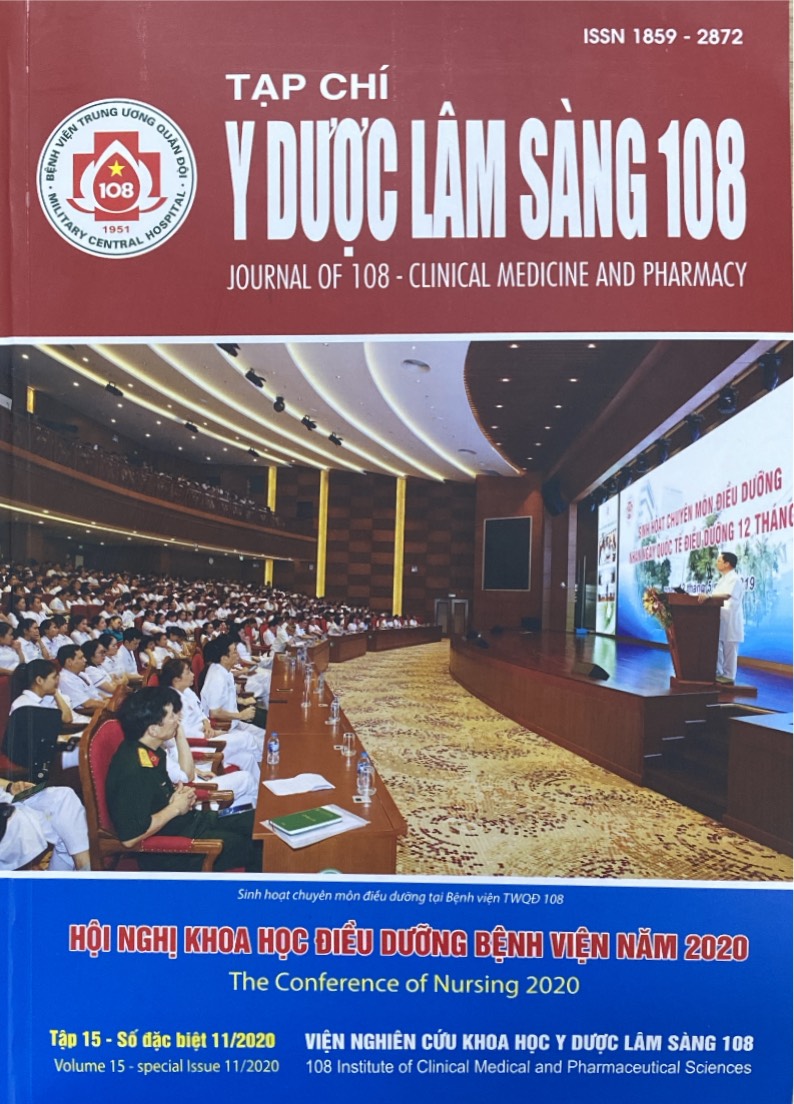Factors related to professional autonomy in nursing practice at 211 Military Hospital in 2020
Main Article Content
Keywords
Abstract
Objective: To investigate the degree of professional autonomy and investigate factors related to the nursing professional autonomy of nursing at 211 Military Hospital in 2020. Subject and method: A correlation and cross-sectional research on 120 nurses working in the boarding departments and had more than one working year, from April 2020 to August 2020. Result: Average score of autonomy in nursing practice 3.95 ± 0.39, achieved high degree of autonomy. Nursing-physician cooperation (CASCD) was shown to a high degree with a mean total score (5.81 ± 0.77) and a positive correlation with autonomy (r = 0.188, p<0.05). Nursing practice environment (B-PEM) was moderate (3.5 ± 0.37) and significant with professional autonomy (p<0.05) and positive correlation (r = 0.3). Conclusion: The level of professional autonomy (DPBS) of nurses at 211 Military Hospital is high. Readiness, Empowerment, Reality and Evaluation are all high-level. Factors related to professional autonomy are age, work environment, years as a practical nurse and many years at the current job, job position, nursing - doctor cooperation, real environment operating nursing. Collaboration between nurses and physicians is a high degree and involves autonomous nursing professional. Nursing practice environments are moderate and are related to professional autonomy nursing.
Article Details
References
2. Bahadori et al (2009) Level of autonomy of primary care nurse practitioners. Journal of the American Academy of Nurse Practitioners: 21. from https://doi.org/10.1111/j.1745-7599.2009.00437.
3. Currie V et al (2005) Relationship between quality of care, staffing levels, skill mix and nurse autonomy: literature review. Journal of Advanced Nursing51: 73-82.
4. Dempster JS (1990) Autonomy in practice: Conceptualization, construction, and psychometric evaluation of an empirical instrument. University of San Diego.
5. Dempster JS (1994) Autonomy: A professional issue of concern for nurse practitioners. In Nurse Practitioner Forum 5(4): 227-232.
6. Georgiou et al (2017) Nurse-physician collaboration and associations with perceived autonomy in Cypriot critical care nurses: Collaboration and autonomy in intensive care nurses in Cyprus. Nursing in Critical Care: 22, from https://doi.org/10.1111/nicc.12126.
7. Labrague et al (2019) Predictors and outcomes of nurse professional autonomy: A cross-sectional study: Nurse professional autonomy. International Journal of Nursing Practice: 25, from https://doi.org/10.1111/ijn.12711.
 ISSN: 1859 - 2872
ISSN: 1859 - 2872
